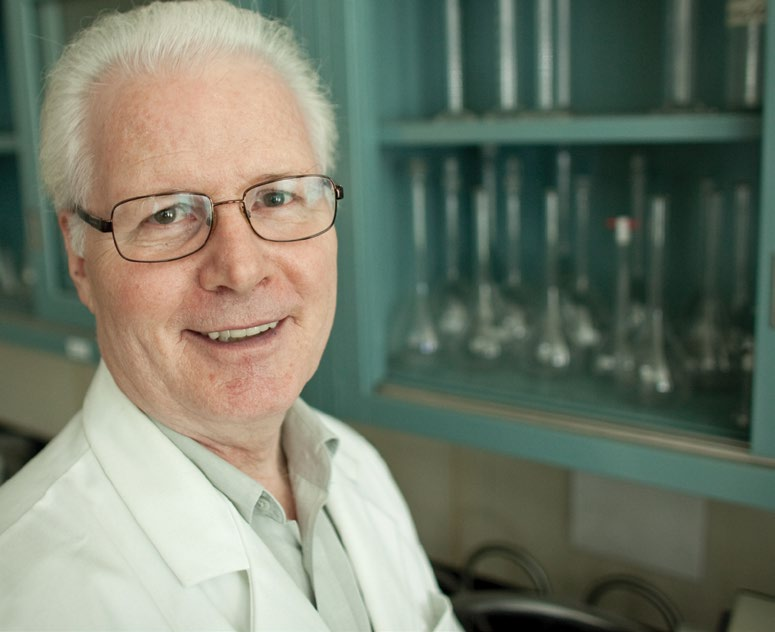A new generation of synthetic polymer fibers is starting to transform the textile industry. The fibers are made from polylactic acid (PLA) and have the potential to replace polyesters such as polyethylene terephthalate (PET), which accounts for 40 percent of the world’s textile production.
Unlike PET, the manufacture of PLA fibers is not a drain on fossil fuels: the fibers are polymerized from lactic acid produced by the fermentation of natural sugars in agricultural crops. The fibers are also biocompatible and biodegradable.
Polymer fibers are often fabricated with a meltspinning technique. Viscous molten polymer is pumped through a plate filled with small holes, leaving strands of viscous liquid that stretch and begin to solidify as they wind onto a takeup spool.
All of this happens extremely quickly. Fiber spinning rates can reach 9,000 meters per minute and transit times from plane to take-up spool can last less than a millisecond. During this process, the properties of the fiber are governed by the way in which the flexible molecular chains align.
Melt-spinning conditions must be optimized to improve efficiency and maintain quality control. This requires an ability to predict how changes in processing conditions affect fiber properties.
Anthony McHugh has developed theoretical models for the fiber meltspinning of conventional polymers, and is now working on PLA fibers. “The main challenge is to incorporate the physical changes that occur in such short time scales into the model,” says McHugh, a professor of chemical engineering.
McHugh’s models are unique in that they include explicit equations to describe the stresses in both the molten polymer and the crystalline forms. The two equations are linked through the crystallization process, enabling researchers to predict two critical phenomena – the manner in which polymer molecules align under changing stress and temperature conditions and, ultimately, the amount of flow-induced and flow-enhanced crystallization that occurs as a function of takeup speed.
A major advantage of McHugh’s models is their ability to predict the reduction in polymer chain orientation that occurs in nylon fibers drawn at high speeds. “This is counterintuitive,” he says. “Normally you would expect to see the increase in orientation with takeup speed to continue.” This phenomenon had been observed by DuPont researchers but never fully understood.
“The practical implication,” says McHugh, “is that we can now identify beforehand the upper limit in spinspeed for processing fibers with maximum orientational properties.”
Some of the world’s leading synthetic fiber producers, including Dow Chemical, Celanese Acetate, DuPont and ExxonMobil, are now using McHugh’s models.
In 2002, with the help of graduate student William Kohler and postdoctoral associate Prashant Shrikhande, McHugh turned his attention to polylactic acid.
“One of the unusual features of PLA, compared to most other polymers, is that the monomer, lactic acid, exists in two different forms: a D- and an L-form,” he says. “In molecular terms, the D-form is simply a mirror image of the L-form.”
Polymerizing a mixture of the two forms produces a polymer with a relatively low melting point and mechanical properties poorly suited for fiber applications. Using just one of these forms, say, the L-type, produces a highly crystalline polymer (PLLA) with superior mechanical properties and a melting temperature of 175 degrees C. Combining equal amounts of both forms into a “racemic” mixture, however, results in the formation of a co-crystal phase that exhibits an even higher melting temperature and superior mechanical properties.
The manufacture of PLA fibers requires processing conditions greater than 190 degrees C. At these temperatures, reactions can cause a reduction in the polymer’s molecular weight and a degradation of its mechanical properties.
“Clearly, this polymer has a very narrow processing window,” says McHugh, “which puts an even greater emphasis on the need to develop a reliable theoretical model.”
The first attempts to apply McHugh’s model did not meet expectations for PLLA. The chainentangled nature of the polymer led to increased viscosity and greater spin speed. McHugh responded by using a newer constitutive equation that accounts for chain entanglements, the so-called “extended pom-pom” model.
“This modification has allowed us to accurately predict fiber diameter profiles and elongation of fibers made from both PLLA and rPLA as a function of spinning rate,” says McHugh. “Moreover, we have been able to predict the experimentally observed enhancement in the co-crystal formation that occurs at high spin speeds.”
McHugh believes the robustness of the model will enable him to examine other parameters, such as the effect that polymer chain branching and molecular weight dispersity have on spinning behavior.
The work was funded by NSF through the Center for Advanced Fibers and Films at Clemson University.

